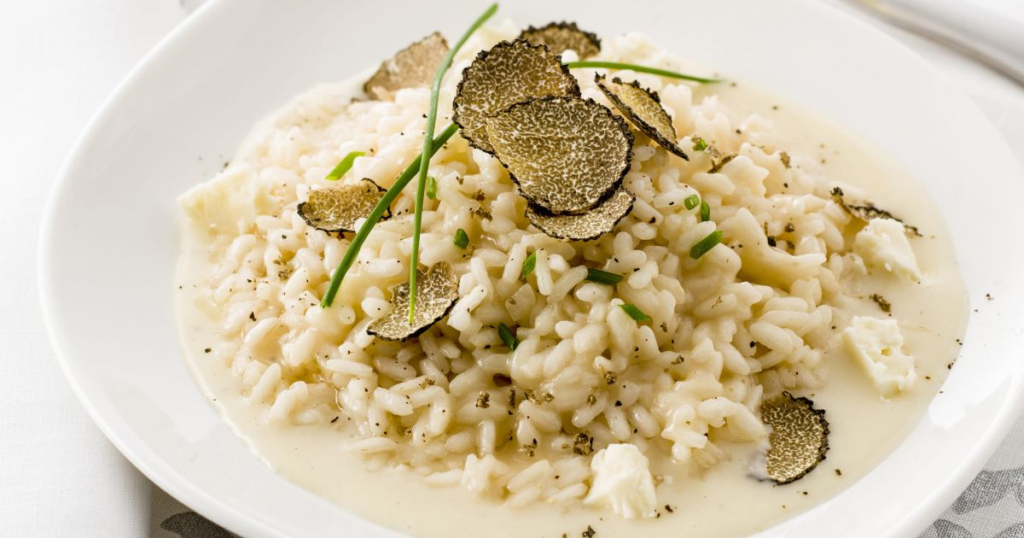
The gentle rhythm of stirring, the gradual transformation of humble rice grains into velvet luxury, and the intoxicating aroma that fills dining rooms across the globe risotto represents one of culinary art’s most meditative and rewarding endeavors. This northern Italian masterpiece has transcended its regional origins to become a canvas for creativity in kitchens worldwide, where chefs interpret tradition through local ingredients and personal vision. The journey from raw Arborio rice to the perfect spoonful of creamy comfort speaks to something fundamental about the human relationship with food: our desire to transform simple ingredients into experiences that nourish both body and soul.
In dining hotspots around the world, risotto has evolved from a traditional Italian staple into a versatile platform for culinary innovation. Each grain of rice becomes a vessel for flavor, absorbing the essence of whatever surrounds it while maintaining its distinct texture and character. The magic lies not just in the final dish but in the process itself—the patient stirring, the gradual addition of warm stock, the careful monitoring of temperature and timing that transforms starch into silk. This labor of love demands respect from both chef and diner, creating moments of anticipation that make each bite a celebration of patience and skill.
Grain Architecture and Textural Mastery
The foundation of exceptional risotto lies in understanding the unique properties of short-grain rice varieties that have been cultivated in Italy’s Po Valley for centuries. Arborio, Carnaroli, and Vialone Nano each possess distinct characteristics that influence the final texture and flavor of the dish. These rice varieties contain high levels of amylopectin starch, which releases slowly during cooking to create the characteristic creamy texture without the need for dairy products. The outer layer of each grain remains firm while the interior becomes creamy, creating a contrast that defines perfectly executed risotto.
Master chefs understand that the choice of rice variety profoundly impacts the final dish’s character. Arborio, with its large grains and high starch content, creates a robust texture that holds up well to bold flavors and chunky additions. Carnaroli, often considered the king of risotto rices, offers superior starch release and maintains its shape even with extended cooking, making it ideal for delicate preparations where grain integrity matters. Vialone Nano, smaller and more delicate, absorbs flavors quickly and creates an almost liquid creaminess that pairs beautifully with seafood and vegetables.
The technique of toasting rice before adding liquid represents a crucial step that many home cooks overlook but professional kitchens execute with precision. This process, known as tostatura, involves coating each grain with fat and gently heating until the rice becomes translucent around the edges. This step not only prevents the grains from clumping together but also creates a nutty flavor foundation that enhances the overall complexity of the finished dish. The sound of rice hitting hot oil, the visual transformation from opaque to translucent, and the aromatic changes that occur during toasting all signal the beginning of risotto’s metamorphosis.
Liquid Dynamics and Flavor Integration
The relationship between rice and liquid forms the heart of risotto preparation, where stock becomes the medium through which flavors merge and textures develop. Professional kitchens maintain stocks at precise temperatures, understanding that cold liquid added to hot rice creates temperature shock that can damage grain structure and produce uneven cooking. The art lies in finding the perfect balance between liquid addition and absorption, creating a rhythm that allows each grain to reach its full potential while maintaining the proper consistency throughout the cooking process.
Timing becomes everything in risotto preparation, where the addition of liquid must match the rice’s absorption rate to prevent either drying out or becoming soupy. Experienced chefs develop an intuitive sense for this rhythm, reading visual cues such as the way rice moves in the pan and the sound of stirring to determine when to add the next ladle of stock. This dance between chef and ingredient requires constant attention and adjustment, making risotto one of the few dishes that cannot be successfully prepared while multitasking.
The choice of cooking liquid profoundly influences the final flavor profile, with different stocks creating entirely different dining experiences from the same base recipe. Vegetable stocks provide clean, bright flavors that allow seasonal ingredients to shine, while rich meat stocks create deeper, more complex foundations that support robust additions like mushrooms or game. Seafood stocks bring oceanic minerality that enhances fish and shellfish preparations, while wine-based liquids add acidity and complexity that brightens the overall dish.
Seasonal Orchestration and Ingredient Harmony
The beauty of risotto lies in its adaptability to seasonal ingredients, where each time of year brings new possibilities for creative expression. Spring risottos celebrate delicate flavors with fresh peas, asparagus, and tender herbs that require gentle handling to preserve their bright characteristics. These preparations often feature lighter stocks and minimal additions, allowing the natural sweetness of young vegetables to shine through the creamy rice backdrop.
Summer brings abundance that can overwhelm less skilled cooks, but masters understand how to balance multiple flavors without creating confusion on the palate. Tomatoes, zucchini, and fresh corn create vibrant preparations that capture the essence of warm weather dining, while herbs like basil and mint add aromatic complexity that enhances rather than competes with the rice’s subtle flavor. The key lies in understanding how different ingredients release their flavors at different stages of cooking, timing additions to create harmony rather than competition.
Autumn risottos embrace the earthiness of mushrooms, squash, and root vegetables that require longer cooking times and more robust flavor profiles. These preparations often feature darker stocks and more aggressive seasoning to complement the stronger flavors of fall ingredients. The transformation of tough winter vegetables into silky components that meld seamlessly with rice requires patience and skill, but the results justify the effort with dishes that provide comfort during shorter days and cooler weather.
Winter risottos offer opportunities for incorporating preserved ingredients, cured meats, and aged cheeses that provide richness and complexity during the season when fresh ingredients are scarce. These hearty preparations often feature multiple cooking techniques, with ingredients prepared separately before being combined with rice to create layers of flavor and texture. The challenge lies in balancing richness with freshness, ensuring that winter risottos remain satisfying without becoming heavy or monotonous. Italian san diego little italy represents one of many cultural enclaves where traditional risotto techniques meet local ingredients and preferences, creating unique interpretations that honor both heritage and innovation in vibrant dining districts across the globe.

Temperature Mastery and Service Excellence
The moment of service represents the culmination of risotto preparation, where timing, temperature, and presentation must align perfectly to deliver the intended experience. Risotto continues cooking even after removal from heat, requiring chefs to undercook slightly to account for carryover cooking that occurs during plating and service. This precision demands experience and confidence, as there is no opportunity to correct temperature or texture once the dish leaves the kitchen.
Professional service of risotto involves understanding that the dish has a narrow window of optimal temperature and texture, requiring coordination between kitchen and dining room that surpasses most other preparations. Servers must understand the urgency of risotto service, ensuring that plates reach diners while the rice maintains its creamy consistency and proper serving temperature. This coordination extends to diners themselves, who must be prepared to enjoy risotto immediately upon arrival rather than allowing it to cool while engaging in conversation.
The presentation of risotto requires techniques that showcase both the dish’s rustic origins and its refined execution. The traditional all’onda technique creates gentle waves in the rice that demonstrate proper consistency while creating visual appeal. Garnishes must be applied with precision, as they become integral to both flavor and presentation. The choice of serving vessel affects temperature retention and visual impact, with warm bowls ensuring that risotto maintains its optimal temperature throughout the dining experience.
Cultural Migration and Modern Innovation
The global spread of risotto from its northern Italian origins has created fascinating variations that reflect local ingredients, cooking techniques, and cultural preferences. These adaptations demonstrate risotto’s fundamental versatility while raising questions about authenticity and tradition in an increasingly connected culinary world. The challenge for modern chefs lies in respecting traditional techniques while incorporating local ingredients and preferences that create meaningful connections with their specific dining communities.
Asian influences have created risotto variations that incorporate ingredients like miso, seaweed, and specialty mushrooms that add umami depth while maintaining the dish’s essential character. These preparations often feature different cooking liquids and seasoning approaches that reflect local palates while honoring the basic principles of risotto preparation. The results can be revelatory, demonstrating how fundamental techniques can adapt to different cultural contexts while maintaining their essential appeal.
American interpretations of risotto have embraced local ingredients and cooking techniques that create distinctly regional variations. Southern preparations might feature ingredients like country ham and collard greens, while Western versions incorporate local seafood and wine varietals. These adaptations demonstrate risotto’s ability to serve as a canvas for expressing local food culture while maintaining its essential character as a comfort food that brings people together around the table.
Conclusion
The enduring appeal of risotto lies in its ability to transform simple ingredients into extraordinary experiences through patience, skill, and understanding. In dining hotspots around the world, this humble dish continues to evolve while maintaining its essential character as a celebration of technique and flavor. The journey from raw rice to creamy perfection represents more than cooking; it embodies the human desire to create beauty and comfort through food.
The future of risotto in fine dining depends on chefs who understand both traditional techniques and contemporary possibilities, creating dishes that honor the past while embracing innovation. The global appreciation for risotto reflects our collective understanding that great food requires time, attention, and respect for ingredients—values that remain constant even as culinary landscapes continue to evolve.
Whether served in a traditional Italian osteria or a modern fusion restaurant, risotto continues to represent the pinnacle of comfort food elevated to art. Each spoonful carries the weight of tradition, the creativity of innovation, and the promise that simple ingredients, treated with respect and skill, can create experiences that nourish both body and soul. The creamy comforts awaiting diners in the world’s dining hotspots represent not just meals but moments of connection with culinary heritage that spans generations and cultures.








Leave a Reply